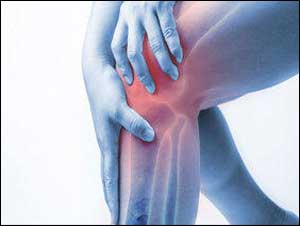- Home
- Editorial
- News
- Practice Guidelines
- Anesthesiology Guidelines
- Cancer Guidelines
- Cardiac Sciences Guidelines
- Critical Care Guidelines
- Dentistry Guidelines
- Dermatology Guidelines
- Diabetes and Endo Guidelines
- Diagnostics Guidelines
- ENT Guidelines
- Featured Practice Guidelines
- Gastroenterology Guidelines
- Geriatrics Guidelines
- Medicine Guidelines
- Nephrology Guidelines
- Neurosciences Guidelines
- Obs and Gynae Guidelines
- Ophthalmology Guidelines
- Orthopaedics Guidelines
- Paediatrics Guidelines
- Psychiatry Guidelines
- Pulmonology Guidelines
- Radiology Guidelines
- Surgery Guidelines
- Urology Guidelines
Osteoarthritis: Only one hour of exercise per week may ward off disability

Good news for osteoarthritis patients-Only one hour of exercise per week may ward off disability, a new study has revealed.
An hour of moderate-vigorous exercise per week significantly may ward off disability in adults with osteoarthritis (OA) or lower extremity joint problems, suggests a recently published study in the American Journal of Preventive Medicine. The data could help populations at higher disability risk understand the benefits of even modest exercise and adjust lifestyle accordingly.
It is a myth that exercising may harm joints of patients of osteoarthritis and cause more pain.The research has revealed that people can and should exercise when they have osteoarthritis. Exercise is considered the most effective non-drug treatment for reducing pain and improving movement in osteoarthritis.
There and mainly three kinds of exercise that are important for people with osteoarthritis: exercises that involve range of motion called flexibility exercises; endurance or aerobic exercises; and strengthening exercises. Each one has different and unique role in maintaining and improving ability to move and function in osteoarthritis.
According to the study, the patients who exercised for one hour per week had a significantly much lower rate of disability over four years compared to patients who exercise for less than 1 hour per week. This study is clinically significant as it may encourage OA patients to exercise who otherwise may be reluctant to perform any physical activity owing to time constraints, pain or other factors.
Dorothy D. Dunlop, Department of Medicine, Northwestern University, Feinberg School of Medicine, Chicago, Illinois, and colleagues sought to identify evidence-based thresholds to maintain disability-free status over 4years among adults with lower extremity joint symptoms.
"One hour of moderate activity each week is less than half the current recommendation," Dr Dunlop told MedPage Today. "Yet, one hour of moderate activity each week distinguished people who stayed independent over four years from those who developed a disability in this sample. This result is important because many people with arthritis not only fail to meet the current guideline, they are inactive -- doing almost no moderate activity. A lower goal may motivate inactive older adults to begin their path towards a physically active lifestyle with its many health benefits.
For the study, the researchers analyzed data from 1,564 adults aged 49 to 83 years at elevated disability risk because of lower extremity joint symptoms, majority of them being female (56%) and frequently obese (38%, BMI ≥30). They were analyzed for biennial assessments of disability-free status from gait speed ≥1meter/second (mobility disability-free) and self-report of no limitations in activities of daily living (activities of daily living disability-free).
Also Read: Vigorous exercise can lead to low blood sugar in teenagers with type 1 diabetes
Classification tree analyses conducted in 2017–2018 identified optimal thresholds across candidate activity intensities (sedentary, light, moderate-vigorous, total light and moderate-vigorous activity, and moderate-vigorous accrued in bouts lasting ≥10 minutes). Over the four-year study period:
- 89% (1,223/1,370) remained free of mobility disability and 84% (1,222/1,460) remained free of ADL disability.
- Observed disability onset rates were eight times greater (24% vs 3%) for developing mobility disability, and almost double (23% vs 12%) for developing ADL disability, among people engaged in the total moderate-vigorous activity below versus above minimum threshold levels.
- People meeting the optimal mobility threshold (total moderate-vigorous activity ≥56 minutes per week) had an 86% lower risk for developing mobility disability compared with those doing less.
- People meeting the optimal moderate-vigorous activity threshold for ADL disability-free outcomes (moderate-vigorous activity total ≥55 minutes per week) had a 45% lower RR for developing ADL disability compared with those with less.
Also Read: Thiazides use increases risk of knee replacement surgery in osteoarthritis patients
The optimal minimum threshold predicting disability-free status in mobility was total moderate-vigorous activity of ≥56 minutes per week at baseline. The optimal minimum threshold predicting ADL disability-free status was total moderate-vigorous activity ≥55 minutes per week at baseline.
"If future work shows one hour a week of moderate activity is beneficially related to other health outcomes, this threshold could provide an intermediate physical activity goal on the way to the broadly recommended 2.5 hours moderate activity each week with the wide range health benefits it supports," Dunlop said.
To read the complete study log on to https://doi.org/10.1016/j.amepre.2018.12.017

Disclaimer: This site is primarily intended for healthcare professionals. Any content/information on this website does not replace the advice of medical and/or health professionals and should not be construed as medical/diagnostic advice/endorsement or prescription. Use of this site is subject to our terms of use, privacy policy, advertisement policy. © 2020 Minerva Medical Treatment Pvt Ltd